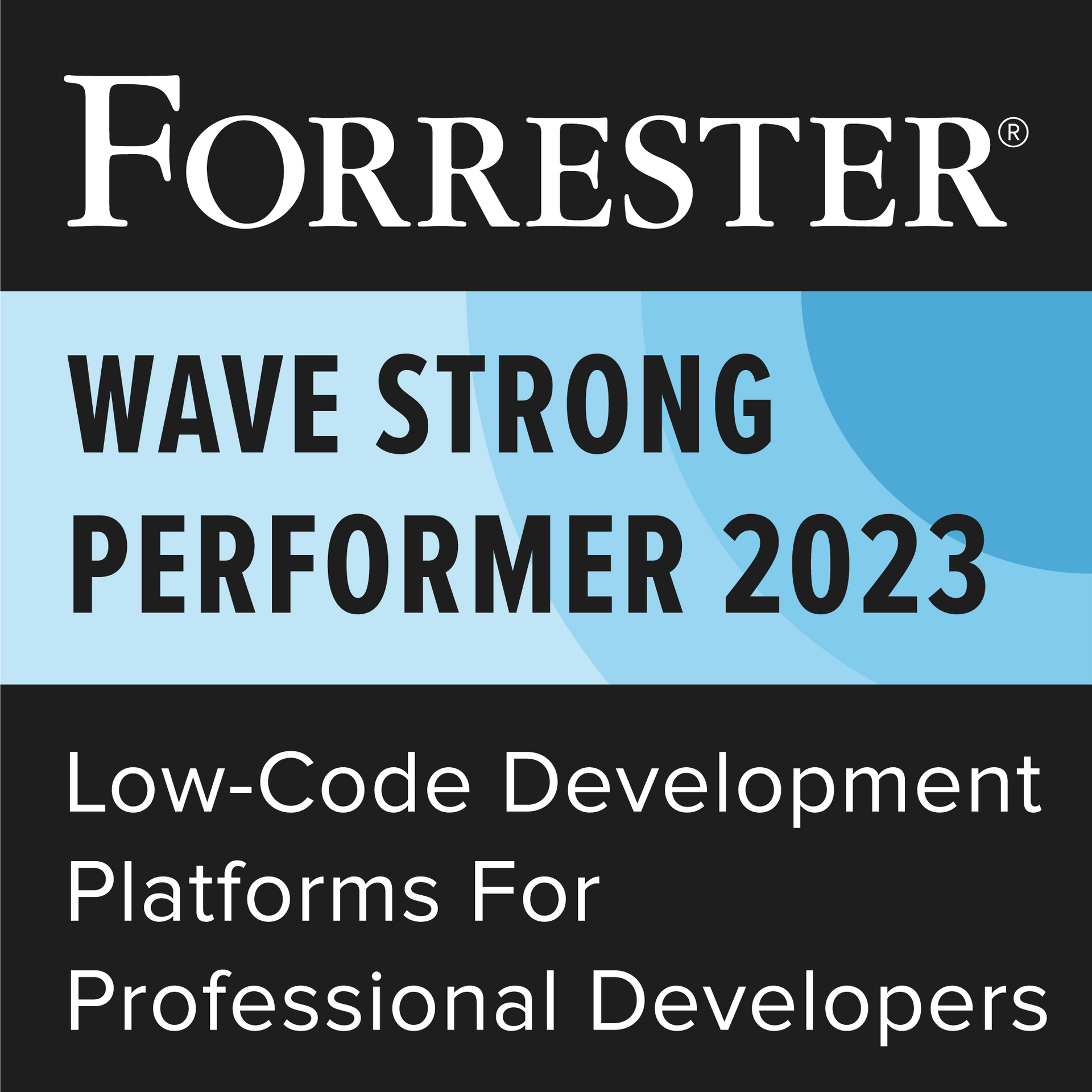Low-Code development platforms:
Five must-have capabilities you need to know about
The rapid rise of cloud computing in the past 15 years has reshaped how businesses operate. And it also had a direct impact on how we build custom enterprise applications.
Taking a step back, the pivotal moment in this transformative journey was 1999. It was when Marc Benioff, an ex-Oracle executive, founded Salesforce. Together with a team of innovators – Parker Harris, Dave Moellenhoff, and Frank Dominguez – they unleashed the
Software-as-a-Service (SaaS) model.
This triggered a transition from an infrastructure-heavy business model to a service-centric one.
Moving away from managing physical data centers to buying cloud-based services led to three major trends.
- Democratization: Non-IT employees can create tech solutions for business without complex coding skills.
- Composable Business: Businesses started designing their technology systems and applications in a modular, Lego-like fashion for quick, flexible adaptations.
- Hyper Automation: Business and IT teams now use multiple technologies and tools to automate most business functions.
This also gave rise to a unique breed of software called the low-code development platforms. Forrester explains Low-Code platforms as a
transformational technology to make apps and empower many decentralized developers — including both professional and citizen developers. The technology helps teams to build custom apps by reducing the need for complex programming languages.
But not all low-code platforms are equal. It's essential to distinguish the exceptional from the ordinary when you test which low-code development platform aligns with your enterprise standards.

Using Forrester's advice, let's review the five must-have capabilities for your low-code development platform.
1. Tooling for Data and Integrations:
- The platform should have ready-to-use integration connectors (more below)
- Integration tooling is the most crucial evaluation factor for an enterprise-grade low-code development platform. For instance, AgilePoint provides ready-to-use integration connectors with 125+ services (APIs, RPA, ERPs, CRMs, AL/ML Cloud Services, Popular Databases, IoT, Accounting and Payments, Document Management, Message Brokers, and Chat Bots)
- Data modeling features that allow you to build a logical structure of data within an application. (Source, type, relationships, fields)
- Integration with agile project management platforms (Asana, GitHub) and pre-integrated content management systems (WordPress)
2. Tooling for Process Automation:
- A strong (and intuitive) automation engine
- Process automation features that are “intuitive” to use and useful for long-running processes.
- Orchestration, rules, process mining, and support for robotic process automation (RPA)
- The platform should have features for AI development or provide deep integration with AI services (Amazon/Azure Machine Learning, Microsoft Cognitive Services)
- Supports high-scale production-grade apps and reuse of development assets.
3. Tooling for User Experience:
- The platform should provide a toolset for UX and native mobile app development
- A marketplace of platform add-ons and apps to jumpstart your low-code development journey
- UX and mobile dev capabilities, no extra development effort to build the native mobile version of your apps.
4. DevOps, collaboration, and developer experience:
- It should be suitable for multiple personas (more on this below)
- Your low-code development platform should activate multiple user groups like Citizen Developers to build innovation-driven apps, Professional Developers for serious enterprise apps, and Data and Process Analysts to help them build data- and process-centric apps.
- Your low-code development platform should enable fusion teams (combining professional and Citizen Developers) to work collaboratively on different parts of the same app/apps.
- Native and ready-to-use document management/collaboration capabilities
- Allows for scaled citizen development — a low-code and no-code application development paradigm in which a low-code development platform supports use cases across departments, business units, subsidiaries, and global business teams.
- The integrated development environment (IDE) should not be overly technical and should cater to businesspeople.
- The platform should have Continuous Integration/Continuous Development (CI/CD) features that may include Package Manager (to compile and deploy apps for consistency and reliability in the deployment process), automated testing, rollback mechanism, notifications, and alerts.
5. Governance, admin, security, extensions:
- Features for developer governance and portfolio management that provide a very granular and comprehensive list of access controls and governance settings for every component of the platform
- A significant range of prebuilt reports to monitor app and process performance
- Governance features provide an end-to-end view of the whole app portfolio
- Version control capabilities
Deployment:
- Your low code development platform should provide flexible deployment options like SaaS (Software-as-a-Service), on-premises, private, public, and hybrid cloud. If your current provider is limited to a SaaS model, it might be time to consider a more robust tool that enables you to deploy virtually anywhere, including on-premises and in private and public clouds.
Pricing:
- Your low-code development platform shouldn’t bind you into deal sizes. In fact, it’s best to have ‘value-based’ pricing. Value pricing allows you to switch between plans based on adoption and consumption pattern.
- Also, a steep per-user fee pricing undermines your plan to scale your apps and automations. Therefore, choose platforms that are cost-effective.
- Your LCNC platform provider should have a published pricing and should be able to give you an estimate based on consumption/usage scenarios. You can refer to AgilePoint’s pricing or this document to understand pricing structures of low code development platforms.
Takeaway:
Enterprise architects and decision makers should consider five core capabilities of a low- code development platform before making a purchasing decision. These include data and integration tooling, process automation capabilities, tooling for user experience (UX), tooling for DevOps and collaboration, and lastly governance, security, and extensibility of the platform.
To learn more about the 14 Low Code development platforms that matter the most and how they stack up, download The Forrester Wave™: Low-Code Development Platforms For Professional Developers, Q2 2023.

Are you ready to reengineer your business
automation processes?

A modern process automation and orchestration platform that enables you to open up and seize new business opportunities, supercharge innovation, unlock new levels of efficiency and productivity, and deliver the experiences that help you win.
Follow Us
Platform

Automate business processes and workflows at scale. AgilePoint helps enterprises democratize and accelerate digital transformation, reduce technical debt and future-proof ROI.
Resources
© 2023 AgilePoint. All rights reserved.


